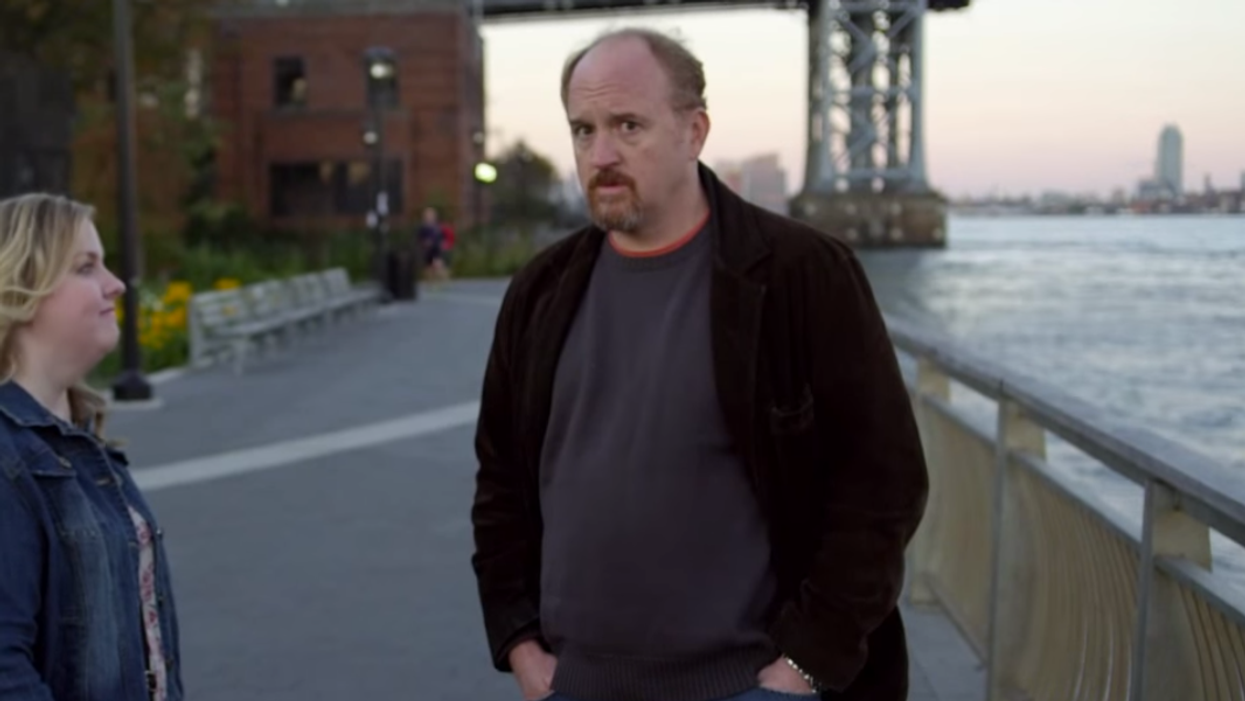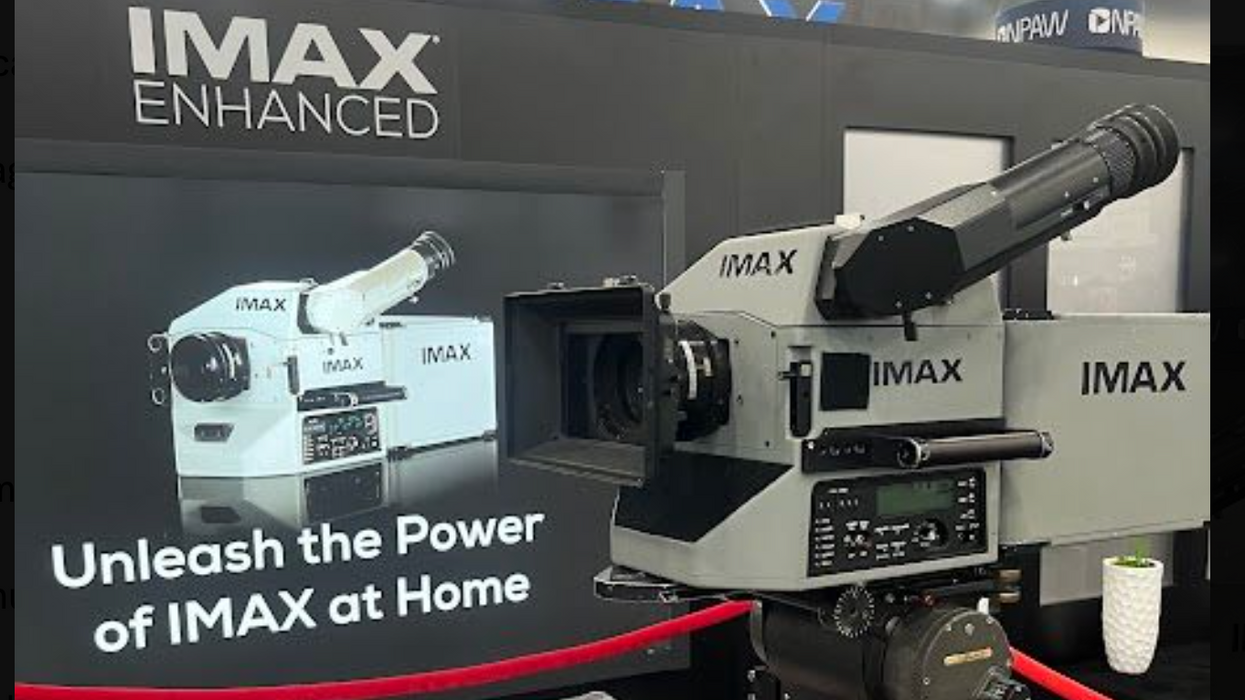The Cinematography of 'Louie': How a Simply-Shot Comedy Masterfully Utilizes the Long Take

Let's admit it. We all love long takes. Most of us have watched, and groveled over, the incredible 6-minute take from True Detective that made waves around the internet several months ago. Add to that the numerous other dramatic shows on television that have begun to utilize extremely cinematic long takes, and it's safe to say that contemporary television has become a haven for long take lovers. However, there's one show on television that has made the consistent use of the long take an instrumental part of its cinematic repertoire, and it's probably the show you would least expect. I'm talking, of course, about Louis C.K.'s unassuming FX comedy, Louie.
In a recent article over on Slate's culture blog Brow Beat, Forrest Wickman pulled a few prime examples of masterful long takes from the current season of Louie (a season that has heavily utilized the long take). In his article, Wickman breaks down a few of these shots from a film criticism perspective, and he does so quite well. In this article, however, I'm going to look at several of the same shots, as well as a few others, but from a perspective of functional cinematography, and break down how the long take is a critical part of the show's humor, drama, and everything in between. So let's get to it!
In order to understand why the long take lends itself so well to the odd, stylistic comedy of Louie, it's important to understand what exactly it is that makes the show so funny. For the most part, it's hardly the content that makes it hilarious because the content is oftentimes comprised of basic everyday situations (with some comedic twists, of course). More than anything else, it's the character of Louie, in all of his awkward glory, as he stumbles through a combination of mundane and absurd occurrences. It's very much a unique portrayal of a funny character in an even funnier world.
Here's a quick example scene, and one of my personal favorites, from the third season of Louie. Fans of David Lynch should be highly appreciative of this.
Now that you've seen an example of the show's humor, let's talk a little bit about how long takes are used to maximize that humor. In order for Louie to be at his most awkward throughout the absurdity of his life, the show's director of photography Paul Koestner allows many of these situations (oftentimes a conversation between Louie and another character) to play out in real-time from a safe distance. This allows Louis C.K.'s immaculate sense of comedic timing and his gloriously goofy body language to take precedence in these shots.
Here's an example from the current season of how the long take is used to accentuate and magnify both the physical and emotional awkwardness of Louie's character as he seeks relationship advice from his downstairs neighbor. After a few loose closeups to establish the characters, the camera settles into a cramped medium 2-shot for nearly 2 full minutes as Louie confounds the doctor with his misguided notions of love and relationships.
Although Louie is an entirely unique spin on the comedic sitcom, it constantly ventures into dramatic territory as Louie deals with the inherent darkness present in his situation as an aging, and oftentimes lonely, single father in New York City.
Here's a prime example of the show's dramatic tendencies from the current season. In this short scene, Louie is talking to his ex-wife about the future of their youngest daughter (who has been having behavioral issues). Unlike the previous example, however, this long take doesn't necessarily add to the humor of the scene, but instead allows the audience to experience an emotional parental dispute in real-time and from an entirely objective point of view. The cinematography allows us to casually observe as Louie descends into an irrationally emotional state, and it's that cinematographic choice (to maintain distance and let it play out in a single shot) that makes this a powerful little scene.
Of course, the long takes in these scenes are purely functional. They give Louie and another character a place to interact, and not much else. The content and the acting take over, and the humor and/or drama are derived almost entirely from that. However, the show's long takes aren't limited to locked-down 2-shots. Not by any stretch of the imagination. They can also be quite dynamic and interactive, as is the case with this shot, which features Louie's Hungarian love interest and his youngest daughter as they indulge in a spontaneous violin duet in a stairwell.
Then, of course, there's this whopping 7 1/2 minute long take from the third episode of the current season. This one also made its rounds on the internet, but not nearly to the extent of the shot from True Detective (and definitely not for the same reasons). In this scene, Louie is finishing up a rather successful date (a rare occurrence in the world of Louie), when his overly nice-guy sensibilities get the best of him and he says something stupid. Then actress Sarah Baker delivers this doozy of a monologue, all the while a steadicam glides from two shot to closeup, then twirls to the opposite side of the 180˚ line and back again in a wonderfully choreographed dance.
Also, keep your eye out for the brilliant breaking of the fourth wall at 4:19.
All in all, the cinematographic techniques in Louie are varied to say the very least. Most shows define their aesthetic and their cinematic language early on, then stick to those techniques (and the assigned meanings for those techniques) throughout the run of the show.
Louie, on the other hand, is a constantly shape-shifting behemoth of a show. In one moment, it's an absurd comedy, and in the next, an equally absurd, yet strikingly poignant dramedy. Despite the fact that techniques like the long take are reused again and again on Louie, these techniques hardly ever mean the same thing from scene to scene. And it's for that reason that this show's cinematography is absolutely brilliant. The content is constantly changing, and the cinematography, despite the show's stylistic simplicity, subtly changes along with it to support those shifts in tone.
This cuts to the core of what cinematography is. Cinematography isn't about creating aesthetics for aesthetics' sake, but instead it's about creating aesthetics in support of a larger purpose. It's not just about telling the story in a visual way, but using visuals to enhance the story that's already being told. Louie's cinematography isn't flashy by any stretch of the imagination, but it accomplishes all of those things and then some. For that reason, the cinematography of Louie might just be one of the best on contemporary television.
What do you guys think of Louie and its long takes? Let's hear your thoughts about Louie's cinematography down in the comments!
Link: The Long Takes of Louie: The Most Cinematic Show on TV -- Brow Beat












